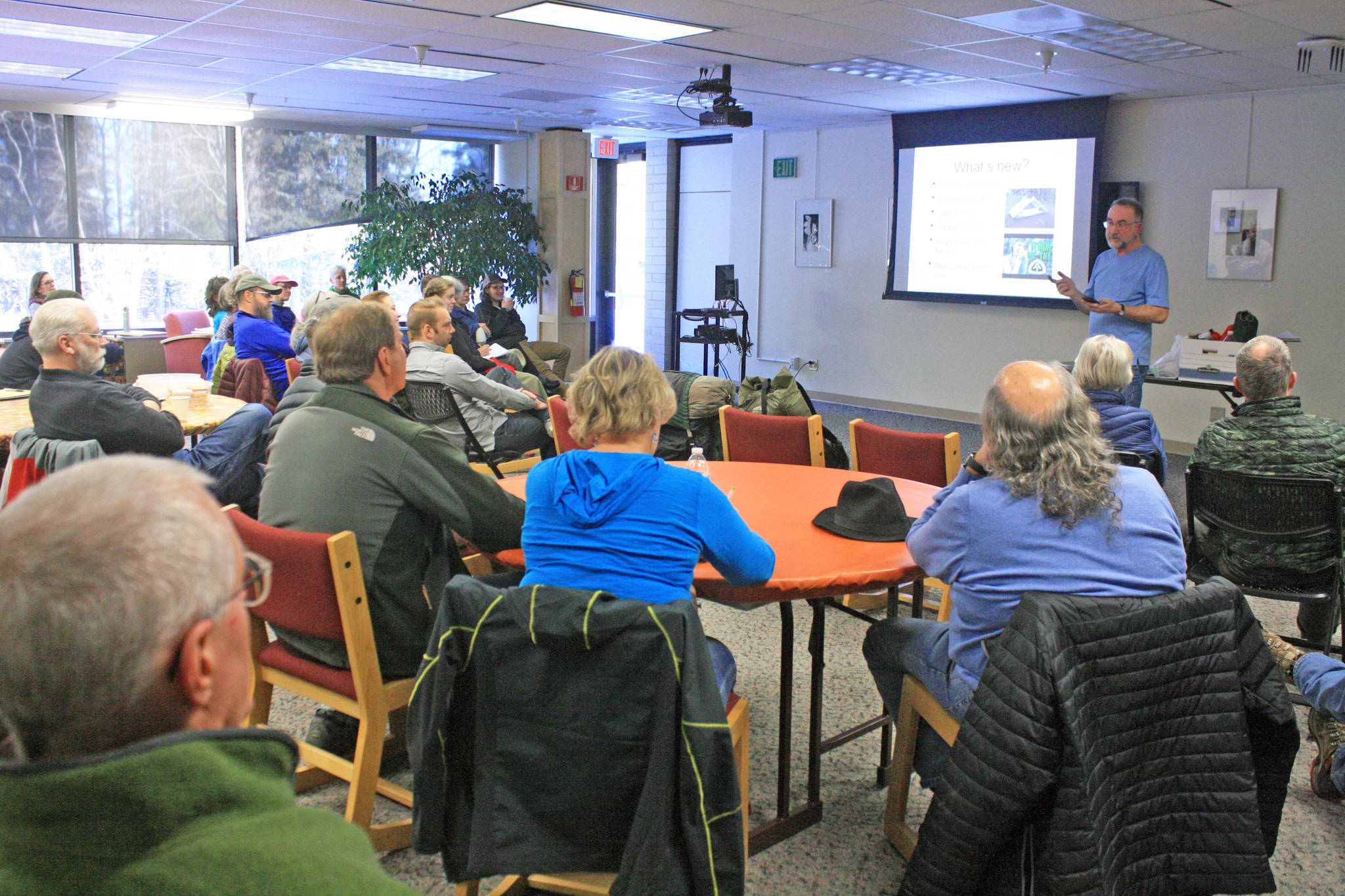No matter how long the journey, hikes must be taken one step at a time. Dave Thomas takes them ounce at time.
An environmental engineer and lifelong hiker, Thomas is an expert in ultra-light backpacking — a growing movement to slash the amount of weight hikers carry on their backs.
“So often, with traditional backpacking, people start off on a weekend or a weeklong trip with 20 or 30 or 40 pounds of gear. Plus food and fuel,” Thomas said. “So might end up with 40- or 50- or 60-pound bag.”
Ultra-light backpacking, defined as getting base packs down to under 10 pounds, throws out some of the conventional wisdom and long-standing rituals of traditional hiking.
The method combines a mixture of cutting-edge technology — using new fabrics and pack materials, such as titanium and carbon fiber — and low-budget ingenuity to cut the fat from backpacks.
“If you shave enough ounces, you’ve started to save pounds,” Thomas said.
A new way to hit the trail
Thomas shared some of the most recent innovations in ultra-light backpacking and laid out his personal strategies for cutting the weight during a presentation, “Going Light: Discover the world of ultra-light backpacking,” hosted Wednesday night at Kenai Peninsula College.
During the presentation, Thomas discussed the change in mentality that goes along with ultra-light hiking.
Instead of the comfort of a freestanding tent, a tarp draped over a walking stick serves as overnight shelter. Bulky and heavy sleeping bags are swapped out for lightweight ground cover and nylon quilts.
“Nylon is very light,” Thomas said. “It feels like this cloud is barely floating on top of you.”
Although ultra-light backpacking often requires an investment in some new gear, a large part of cutting a hiker’s load comes down to dropping what’s not needed.
For example, Thomas suggested ditching the ubiquitous $12 Nalgene bottles for significantly lighter, and free, recycled sports drink containers. To avoid carrying unnecessary packaging, he transfers deodorant from a bulky roll to a ChapStick container, and closely guards mini-toothbrushes and combs left in hotel rooms.
Shedding the pounds has its share of trade-offs. Often the lighter the material, the more expensive the product.
It also can mean giving up a bit of comfort — like a hot meal. No-cook meals allow hikers to ditch cooking equipment, but don’t offer a lot of culinary variety.
“I’ve done no-cook trips for as much as nine days,” he said. “Dinner is looking an awful lot like your lunches, and it can be kind of boring. Different people have different mindsets about this. Sometimes the comfort of a hot meal is worth a pot and a stove.”
But for those who can’t say goodbye to a stove, a small butane canister stove can replace a larger gas stove, he said.
Other light-weight food options include freezer-bag cooking — in which dried ingredients are stored in plastic bags and reconstituted in the pack — or bringing along store-bought dried pasta, potatoes or soups that can be heated with a minimal amount of boiled water.
Even must-have emergency and safety items can be winnowed down, Thomas said. He brings two Bic lighters, a small pocket knife and basic first-aid items, but looks for ways to maximize the utility of what he already packs in case of an emergency. For example, the aluminum stays in backpacks or inflatable sleeping pads can be used to stabilize broken bones.
“A lot of stuff we hike with can help solve first-aid issues,” he said.
Perhaps the most important thing — don’t bring clothes you’re not going to wear. Thomas recommends taking along a thermal layer, puffy layer made of lightweight material, wind shirt, wind pants and multiple-use head covering.
“That right there, will cover you for three-season hiking if you’re moving that’s warm enough,” he said.
Anything more than what you need on the coldest day is unnecessary, he said.
“You don’t need a separate swim suit. You don’t need separate hiking shorts. You don’t need separate warm pants, separate T-shirt,” he said.
And, he said, ditch the boots for more versatile and lighter running shoes.
For those worried about getting wet, Thomas suggests wearing clothing that will dry as you wear it.
Taking a fresh look at an old hobby
Don Barber, who began hiking in 1974, attended the presentation and was impressed with some of the ultra-light suggestions.
“He had some pretty good ideas,” he said.
Barber said he would be loathe to start fresh with all new equipment — his current gear might be heavier, but it works.
“And it’s paid for,” he said.
But he could see himself slowly incorporating some of the ultra-light techniques, like switching to recycled plastic bottles and updating his outdoor wardrobe with higher-tech, lighter-weight items.
“By doing that, you wouldn’t spend as much at any given period of time,” he said. “You’re just kind of working your way into it.”
Kenai Peninsula College English teacher Sara Hadfield, who also attended the presentation, does several-day hikes every summer. Over the years, she’s had to adjust her packing habits through trial and error.
“The first hike I ever took, everything was all wrong,” she said. “My pack didn’t fit well. It was too heavy. It was miserable.”
Since then she’s tweaked her packing and found better-fitting and lighter-weight gear. Wednesday’s presentation gave her more ideas about how to further drop the weight, even without making huge investments in new equipment. Next hike she’ll switch out her heavy tarp for lighter weight ground cover — a foldable silver sheet often found in emergency kits.
She’ll also shed her surplus clothing.
“I really resonated just with bringing fewer clothes,” Hadfield said. “Honestly you can wear the same outfit the entire time. Nobody cares. You don’t need a new change of clothes for every day.”

